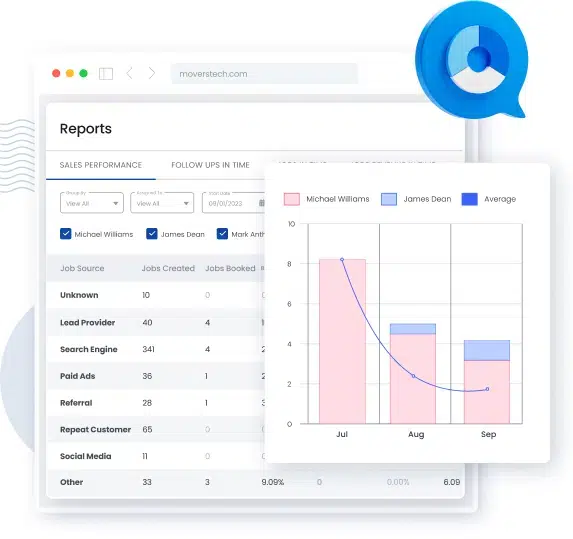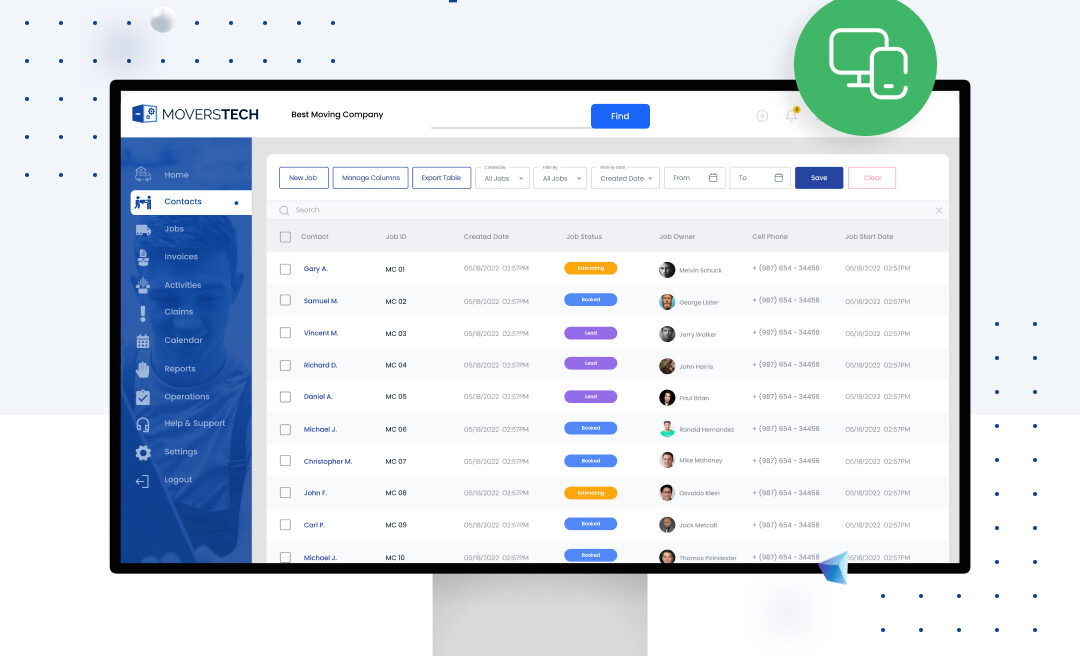With fewer bookings and reduced demand, the off-season often leaves moving companies with excess resources—manpower, equipment, and time—that need strategic handling. Instead of letting assets sit idle, you can focus on improving internal processes, upgrading tools, and planning for future growth. This article will show you how to focus your resources after the moving season to build stronger operations and prepare for the next peak season.
What are the key focus areas?
Instead of rushing to cut costs after the moving season, redirect your resources where they can have the most impact. For example, consider cross-training your staff in areas like customer service, logistics, or even marketing rather than laying off workers. This keeps your team engaged and ensures you’re ready for the next busy season with a more skilled workforce. Cutting costs without a strategy might save money short term but can lead to inefficiencies later.
Use the off-season to identify and address areas that may have been overwhelmed during peak season, such as scheduling or customer support. This is the ideal time to review your procedures and standardize operations across your teams, which will reduce inconsistencies and streamline training for new hires. You can also explore new services like storage solutions, junk removal, or military relocations to diversify your offerings.

Additionally, it’s a great time for fleet maintenance. Ensuring your equipment is in top shape means fewer issues during peak times. You could also plan for future growth by setting up partnerships with temporary staffing agencies, allowing you to scale up when needed.
Focus your resources
As you transition into the off-season, it’s important to shift your approach from reactive cost-cutting to strategic resource management. Instead of viewing the off-season as a time to scale back, see it as an opportunity to refine your processes and prepare for the next surge in demand. This requires smart allocation of resources rather than simply reducing expenses. With the right tools in place, you can optimize your operations, improve efficiency, and position your business for long-term growth.
Channeling vs. cutting expenses
There’s a big difference between slashing costs and strategically managing resources. Cutting expenses without a clear strategy might save money in the short term but can harm operations later. Strategic resource allocation, on the other hand, ensures that you maintain efficiency while reducing unnecessary spending. This means investing in areas like technology, training, and marketing that will bring long-term value. It’s about using your budget wisely to keep operations running smoothly, rather than cutting corners that might hurt your growth potential. For example, you can reduce expenses with CRM software, which helps automate tasks and optimize resource use without compromising service quality.

Reallocating marketing budgets
With fewer immediate jobs coming in, the off-season is the perfect time to assess your marketing performance. Many CRMs come with built-in features to generate detailed reports, allowing you to analyze which channels are delivering the best leads and revenue. By reallocating your marketing budget to focus on these high-performing channels, you can maximize value and attract higher-quality leads that are more likely to convert, setting your business up for success in the coming months.
The benefits of strategic resource management
When you implement strategies on how to focus your resources post-moving season, you get clear benefits. Instead of simply maintaining the status quo, you will position your business for both immediate improvements and long-term success. When you learn how to focus your resources post-moving season, you will get:
- Increased operational efficiency
- Improved financial health
- Preparedness for future growth
Increased operational efficiency
By streamlining processes, your day-to-day management becomes more efficient. With CRM tools automating lead capture, invoicing, and reporting, your team can focus on high-priority tasks without getting bogged down by manual work. For example, manual data entry leads to many errors, affecting your business negatively. Using CRM software will lead you to fewer errors, in addition to faster response times and smoother workflows.

Improved financial health
When you automate moving company finances, you ensure steady cash flow. This also helps you track expenses in real time and identify areas where you can save or reinvest. By managing your finances more strategically, you will maintain a healthier bottom line during both busy and slow seasons.
Preparedness for future growth
A business that takes time to build scalable strategies in the off-season is well-prepared to seize new opportunities. By systematizing operations and reallocating marketing budgets to high-performing channels, you’ll be ready to handle increased demand when the next moving season arrives. This ensures that your company is more efficient and capable of growing without the usual growing pains.
Strategic resource management matters
The off-season is your chance to improve your operations, streamline processes, and prepare for future growth. Instead of cutting costs without a plan, use this time to explore new services, maintain your fleet, and reallocate your marketing strategies. By making strategic investments now, you’ll be well-positioned for the next surge in demand. Tools like moving CRM can help streamline some processes, but the real value lies in how you use your resources to strengthen your business.

